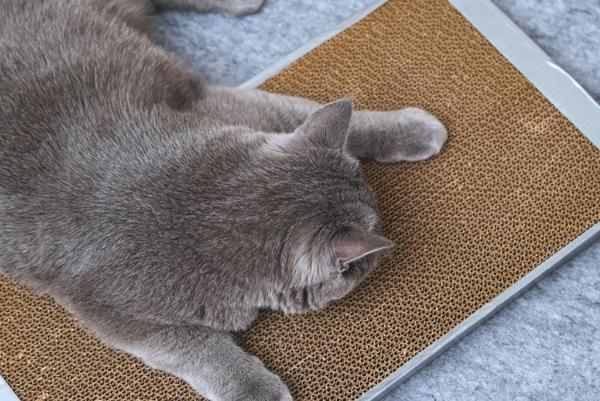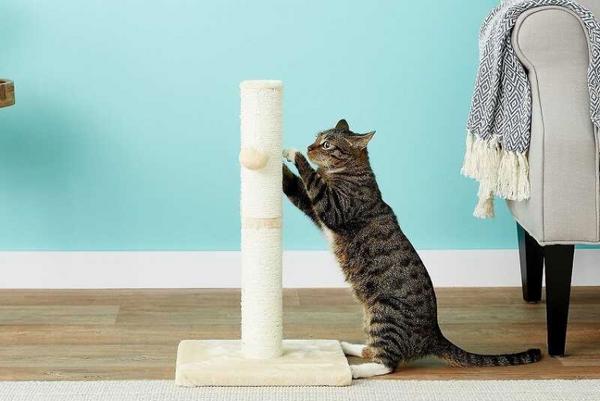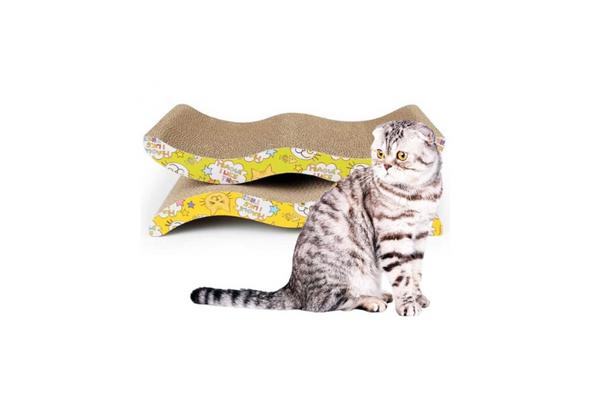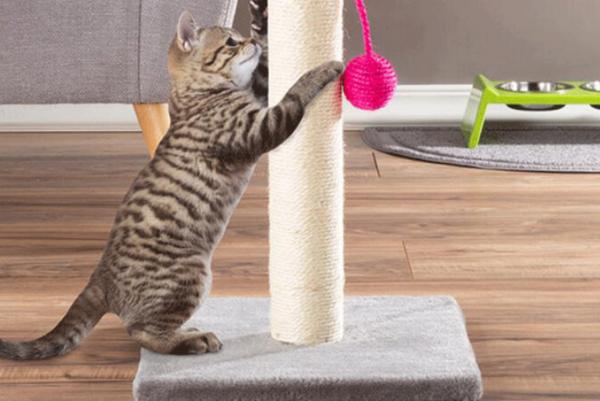Should You Choose a Cardboard or Sisal Scratching Board for Your Cat?

Cats don’t just scratch to sharpen their claws — it’s also a way for them to mark their territory and relieve stress. Without a proper scratching surface, your sofa, curtains, or carpet can easily become their next target. So which is better: a cardboard scratcher or one made of sisal rope? Which lasts longer, saves more money, and is most appealing to your cat? Let’s dive in and find the best option for your furry friend!
Cardboard or Sisal – Which Cat Scratcher is Right for You?
Many cat owners find themselves torn between getting a cardboard scratcher or a sisal one. Both have their pros and cons, and the best choice often depends on your cat’s scratching habits and your own budget or preferences. In this article, we’ll break down the strengths and weaknesses of each to help you make the right call.

Pros and Cons of Cardboard Scratchers
Cardboard scratchers are made by layering corrugated cardboard into different shapes. They’re a popular pick because they’re affordable, easy to replace, and cats tend to enjoy them. But is a cardboard scratcher really the best option? Let’s take a closer look.
Pros:
Budget-friendly: Cardboard scratchers are much cheaper than sisal ones, making them ideal if you’re caring for multiple cats or just want a low-cost option.
Easy to replace: Once worn out, cardboard scratchers can be swapped out quickly. You can even DIY one using old boxes to save money.
Eco-friendly: Cardboard is recyclable and biodegradable, so it’s better for the environment compared to plastic or synthetic options.
Cats love them: Many cats are naturally drawn to the soft texture and grip of cardboard, which mimics the feel of tree bark or rugs.
Lots of styles: From flat boards to curved loungers and scratcher houses, cardboard scratchers come in tons of fun shapes and designs.
Cons:
Wears out quickly: If your cat is a frequent or aggressive scratcher, cardboard won’t last long. You might find yourself replacing it often.
Makes a mess: Scratching cardboard creates bits of paper and dust that can clutter your floor — not ideal if you have a small space or dark-colored flooring.
Not for every cat: Some cats prefer harder surfaces like sisal or wood. If your cat shows no interest in cardboard, it may not be the right fit.
Pros and Cons of Sisal Scratchers
Sisal scratchers are made from wood wrapped with sisal rope — either natural fiber or synthetic. They’re often built as vertical posts or wall-mounted panels. Here’s what you need to know if you’re considering a sisal scratcher.

Pros:
Durable: Sisal rope holds up well over time, especially for cats that scratch often. You won’t need to replace it as frequently as cardboard.
Supports healthy claws: The tougher texture of sisal helps trim and maintain your cat’s claws, keeping them from becoming too long or splitting.
Less mess: Unlike cardboard, sisal doesn’t shred into bits, which helps keep your home cleaner.
Often part of a cat tree: Many sisal scratchers are part of larger play structures or climbing trees, which gives your cat more ways to stay active.
Cons:
More expensive: Sisal scratchers tend to cost more, so you’ll need to factor that into your decision.
Some cats don’t like it: Cats used to the soft feel of cardboard may take time to warm up to the rougher feel of sisal.
Harder to fix: If the rope comes loose, you might need to rewrap it or replace the whole thing. It’s not as simple as swapping out a piece of cardboard.
DIY Cardboard Cat Scratcher
What you’ll need: Old cardboard, a utility knife or scissors, glue, ruler, pencil.
Steps:
Cut cardboard into strips about 2 inches (5 cm) wide.
Roll or stack the strips to form your scratcher shape.
Glue the pieces together tightly.
Let it dry completely.
Place it somewhere your cat likes to hang out.
A great way to reuse old boxes and give your cat a fun spot to scratch!
DIY Sisal Rope Scratcher
What you’ll need: A wooden post or sturdy PVC pipe, sisal rope (natural is best), glue gun or wood glue.
Steps:
Pick a post that’s tall or wide enough for your cat.
Apply glue to the surface.
Wrap the rope tightly around the post, starting at the bottom.
Glue the end of the rope in place.
Let it dry before giving it to your cat.
This homemade option can save money and last a long time if wrapped well.

Final Thoughts: Cardboard or Sisal?
So, should you go with cardboard or sisal? The answer depends on what works best for you and your cat:
Choose cardboard if you're looking for a cheap, easy-to-replace option that most cats enjoy.
Choose sisal if you want something more durable, less messy, and possibly part of a larger play area.
You can even try both to see what your cat prefers — or make your own scratcher at home with the guides above. Whichever you pick, giving your cat a proper scratching spot is key to keeping them happy and your furniture safe.
Hope this guide from Paddy helps you choose the perfect scratcher for your feline friend! 🐾
